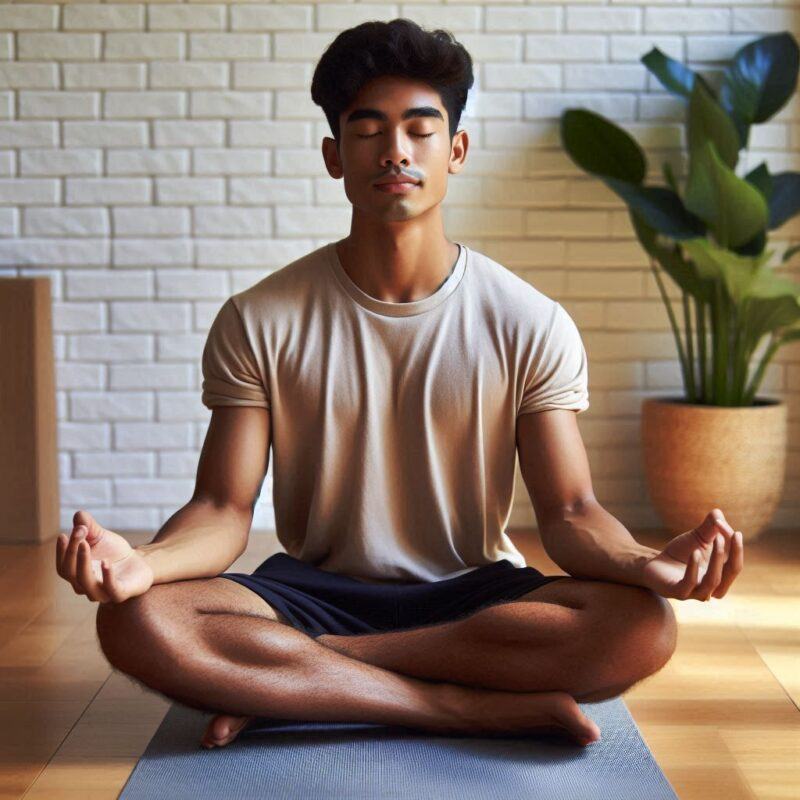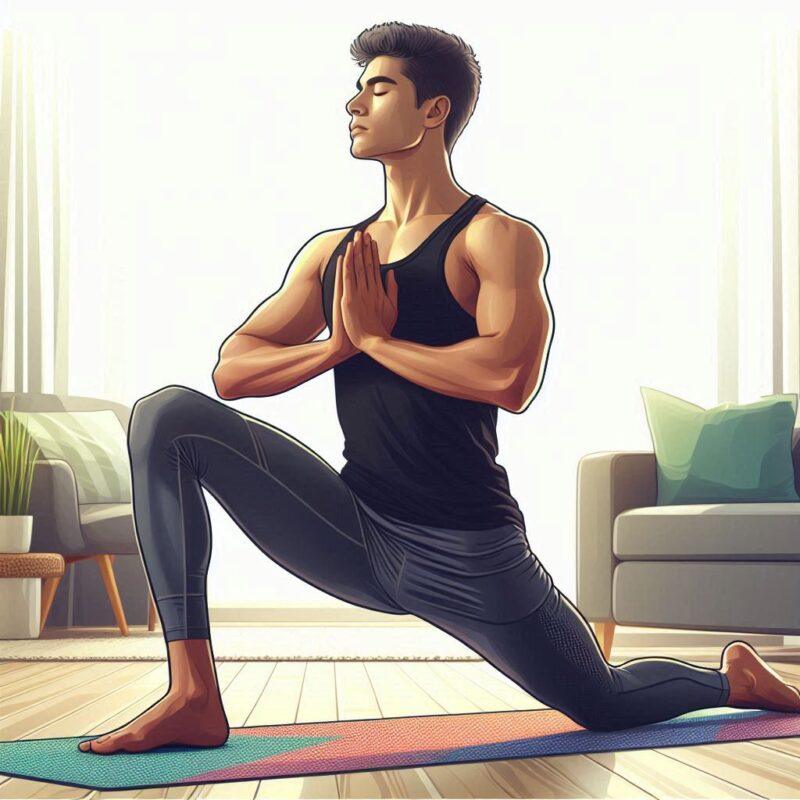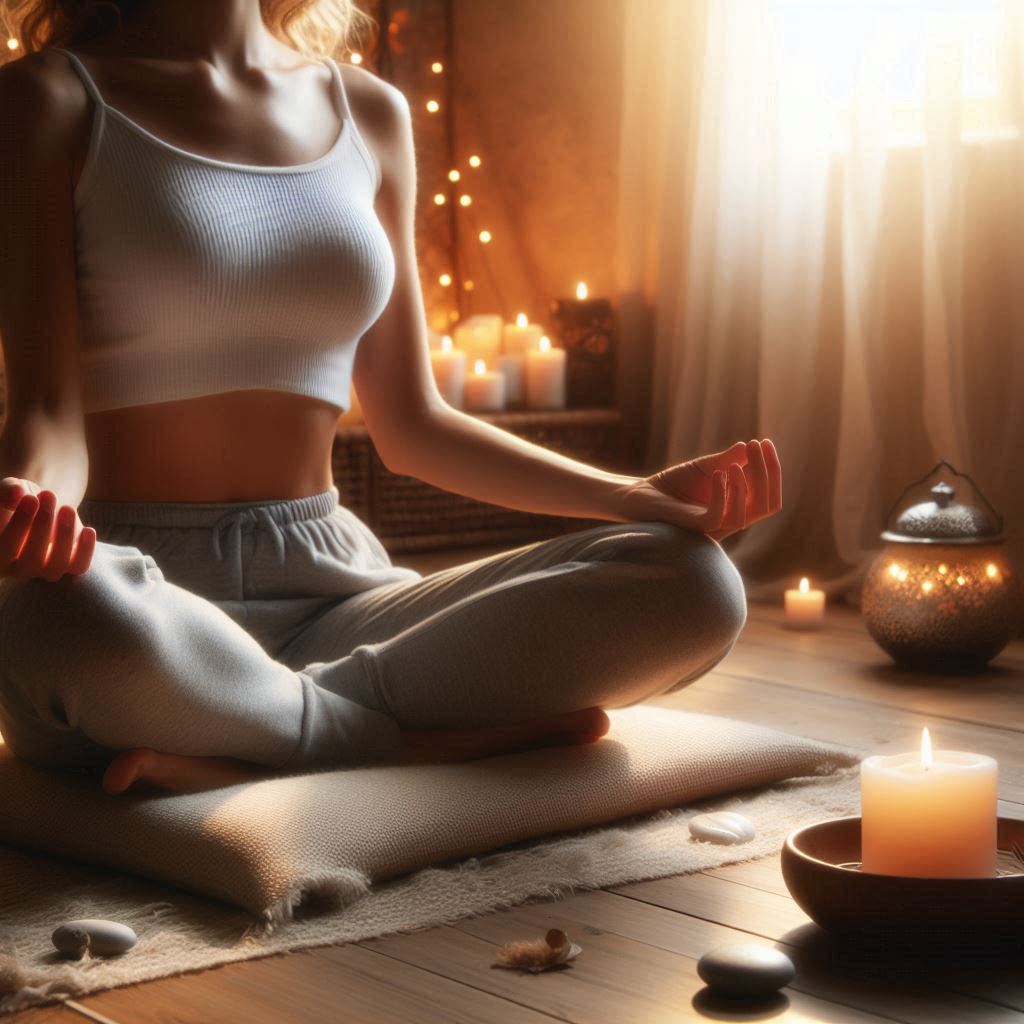 Yoga Poses to Help Sleep: Unlock the Power of Restorative Yoga for Better Sleep
Yoga Poses to Help Sleep: Unlock the Power of Restorative Yoga for Better Sleep
In our fast-paced world, sleep often becomes an elusive luxury. The demands of modern life, work stress, digital distractions, and personal responsibilities can lead to restless nights and sleep deprivation. However, yoga, an ancient practice renowned for its holistic benefits, can be your secret weapon to achieve the restful sleep you yearn for. By incorporating specific yoga poses into your bedtime routine, you can create a calming environment that encourages relaxation and promotes deep, restorative sleep.
The Science Behind Yoga and Sleep
Yoga is more than just a physical exercise; it is a practice that harmonizes the body, mind, and spirit. By integrating movement, breath control, and meditation, yoga creates a profound sense of balance and tranquility. The science behind yoga’s effectiveness in improving sleep quality lies in activating the parasympathetic nervous system, which promotes relaxation and reduces stress.
Research-Backed Benefits
Research has consistently demonstrated the positive impact of yoga on sleep quality. According to a study published in the Journal of Clinical Psychology, individuals who practiced yoga regularly experienced significant improvements in sleep duration and quality. Participants reported falling asleep faster, staying asleep longer, and waking up feeling more refreshed.
In another study conducted by researchers at Harvard Medical School, 55% of participants reported improved sleep quality after just eight weeks of practicing yoga. Moreover, 85% of the participants found yoga to be an effective stress-reduction tool, further enhancing their ability to sleep soundly. These findings underscore the powerful connection between yoga and sleep and highlight the importance of incorporating yoga into your nightly routine.
The Mind-Body Connection
The mind-body connection fostered by yoga plays a crucial role in promoting restful sleep. The physical postures, known as asanas, help release tension and relax muscles, while controlled breathing techniques, known as pranayama, calm the mind and soothe the nervous system. Additionally, the meditative aspects of yoga cultivate mindfulness, allowing individuals to let go of stress and anxiety, which are common culprits of sleepless nights.
Benefits of Yoga for Sleep

Yoga offers a multitude of benefits that directly contribute to better sleep quality. Whether you’re struggling with insomnia, restlessness, or stress-induced sleep disruptions, yoga can be a transformative addition to your bedtime routine. Let’s explore some of the key benefits of yoga for sleep:
1. Stress Reduction
Stress is one of the leading causes of sleep disturbances. When cortisol, the stress hormone, levels remain elevated, it becomes challenging to unwind and fall asleep. Yoga is a powerful stress-reduction tool, as it activates the relaxation response, lowers cortisol levels, and promotes a sense of calmness. By incorporating yoga into your evening routine, you can effectively alleviate stress and create a peaceful mental state conducive to sleep.
2. Mindfulness and Relaxation
Practicing mindfulness through yoga encourages present-moment awareness, reducing mental clutter and anxiety. By focusing on the breath and sensations in the body, yoga allows individuals to disconnect from racing thoughts and external distractions. This heightened state of relaxation prepares the mind for sleep, making it easier to transition from wakefulness to slumber.
3. Improved Breathing
Breathing exercises are an integral part of yoga, and they play a significant role in improving sleep quality. Deep, rhythmic breathing increases oxygen flow to the brain, promoting relaxation and reducing stress. The calming effect of controlled breathing helps activate the parasympathetic nervous system, signaling to the body that it’s time to wind down and prepare for rest.
4. Physical Relaxation
Yoga’s gentle stretches and poses release physical tension and stiffness, particularly in areas where stress is commonly held, such as the neck, shoulders, and lower back. As muscles relax, the body becomes more receptive to sleep, reducing the likelihood of tossing and turning throughout the night.
Key Yoga Poses for Better Sleep

Incorporating specific poses into your bedtime routine is essential to harness the sleep-enhancing benefits of yoga. These poses are designed to calm the mind, relax the body, and promote a sense of tranquility. Here are some highly recommended yoga poses that can help you achieve restful sleep:
1. Child’s Pose (Balasana)
Child’s Pose is a gentle, nurturing pose that promotes relaxation and introspection. By gently stretching the back and hips, it releases tension and encourages a sense of security. To practice Child’s Pose:
1. Kneel on the floor with your big toes touching and knees wide apart.
2. Sit back on your heels and stretch your arms forward, lowering your forehead to the mat.
3. Breathe deeply and let your body relax with each exhale.
2. Legs-Up-the-Wall Pose (Viparita Karani)
Legs-Up-the-Wall Pose is a restorative inversion that soothes the nervous system and reduces stress. Elevating the legs improves blood circulation, alleviating tiredness and promoting relaxation. To practice this pose:
1. Lie on your back with your hips close to a wall.
2. Extend your legs up the wall, forming a 90-degree angle with your body.
3. Rest your arms by your sides, palms facing up, and close your eyes as you breathe deeply.
3. Reclining Bound Angle Pose (Supta Baddha Konasana)
Reclining Bound Angle Pose opens the hips and chest, encouraging deep breathing and relaxation. This pose allows the body to release tension and promotes a sense of tranquility. To practice this pose:
1. Lie on your back and bring the soles of your feet together, allowing your knees to fall open.
2. Place your arms by your sides, palms facing up.
3. Close your eyes and focus on slow, deep breaths.
4. Cat-Cow Pose (Marjaryasana-Bitilasana)
Cat-Cow Pose is a gentle flow that stretches the spine and promotes relaxation. This sequence helps synchronize breath and movement, reducing tension and preparing the body for sleep. To practice Cat-Cow Pose:
1. Start on your hands and knees in a tabletop position.
2. Inhale as you arch your back (Cow Pose) and exhale as you round your spine (Cat Pose).
3. Continue this gentle flow for several breaths, focusing on the breath and movement.
5. Forward Bend (Uttanasana)
Forward Bend is a calming pose that stretches the spine and hamstrings while calming the mind. By encouraging relaxation, this pose helps reduce anxiety and promote a feeling of peace. To practice Forward Bend:
1. Stand with your feet hip-width apart and fold forward at the hips.
2. Let your arms hang toward the floor, and relax your head and neck.
3. Take slow, deep breaths, allowing tension to melt away with each exhale.
6. Corpse Pose (Savasana)
Corpse Pose is the ultimate relaxation pose, allowing you to unwind and let go of the day’s stress fully. This pose is an excellent way to end your yoga practice and ensure you are completely relaxed before heading to bed. To practice Corpse Pose:
1. Lie flat on your back with your arms by your sides, and your palms facing up.
2. Close your eyes and take slow, deep breaths, letting your body sink into the mat.
3. Focus on releasing any remaining tension and embracing a state of deep relaxation.
Creating a Bedtime Yoga Routine

To maximize the benefits of yoga for sleep, consistency is key. By establishing a bedtime yoga routine, you can signal to your body that it’s time to unwind and prepare for rest. Here’s a simple routine you can try:
Step 1: Set the Scene
Create a calming environment by dimming the lights, playing soothing music, and ensuring your space is free of distractions. You may also consider using calming scents like lavender or chamomile to enhance relaxation.
Step 2: Mindful Breathing
Begin your practice with a few minutes of mindful breathing. Sit comfortably and focus on deep, slow breaths, inhaling through your nose and exhaling through your mouth. This simple practice helps center your mind and sets the tone for relaxation.
Step 3: Gentle Movement
Transition through the yoga poses slowly and mindfully. Focus on your breath and the sensations in your body as you move. Allow yourself to fully experience each pose, letting go of tension with every exhale.
Step 4: End with Relaxation
Conclude your practice with the Corpse Pose or a guided meditation. Completely unwind and immerse yourself in the peaceful world of yoga. As you rest motionless, let go of any lingering tension or worry, preparing your body and mind for a restful sleep.
Unlock the Secret to Restful Nights: Discover the Magnesium Supplement Transforming Sleep!
Tips for Enhancing Your Sleep Through Yoga

To make the most of your bedtime yoga routine, keep these tips in mind:
– Practice Regularly: Consistency is key to reaping the benefits of yoga for sleep. Aim to practice yoga before bed several times a week or daily if possible.
– Listen to Your Body: Modify poses as needed to ensure comfort and prevent strain. Yoga should feel nurturing and supportive, not forced or uncomfortable.
– Combine with Meditation: Pairing yoga with meditation or deep breathing exercises can amplify its calming effects. Consider adding a short meditation session to your routine to enhance relaxation.
– Create a Ritual: Establish a calming bedtime ritual that includes yoga, mindfulness, and relaxation. This routine will signal to your body that it’s time to wind down and prepare for sleep.
Conclusion:
Incorporating yoga into your bedtime routine can be a transformative way to enhance your sleep quality. By calming the mind, relaxing the body, and reducing stress, yoga prepares you for a peaceful and restorative night’s sleep. Embrace these practices, and you may find yourself sleeping more soundly and waking up refreshed, ready to face the day with renewed energy.
Say goodbye to sleepless nights and hello to rejuvenating rest. By adopting these yoga poses and creating a nightly routine, you’ll be on your way to achieving the restful sleep you’ve been longing for. Enjoy the tranquility that yoga brings and wake up each morning feeling rejuvenated and ready to conquer the day.
By incorporating yoga into your life, you’re not only investing in better sleep but also enhancing your overall well-being. Embrace the power of yoga, and experience the profound benefits it can bring to your mind, body, and spirit.
References:
List of Yoga Poses:
Learn More:
- https://wellnesswealthconnect.com/simple-yoga-poses-beginners/
- https://wellnesswealthconnect.com/how-to-yoga-poses-for-beginners/
- https://wellnesswealthconnect.com/yoga-breathing-exercises-anxiety/
- https://wellnesswealthconnect.com/mindfulness-and-meditation-for-anxiety/
- https://wellnesswealthconnect.com/mindfulness-exercises-anxiety/
- https://wellnesswealthconnect.com/body-scan-meditation-benefits/

